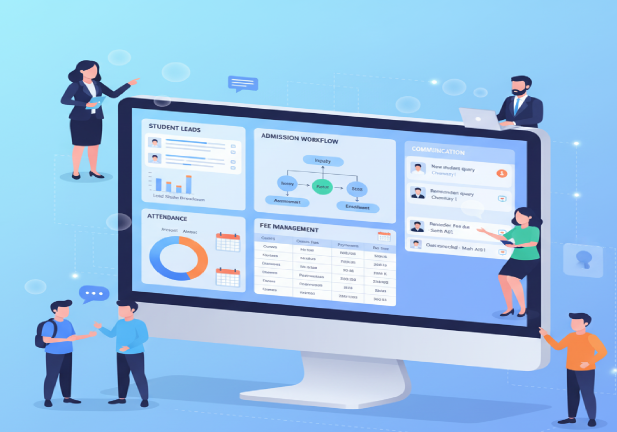While the promise of streamlined logistics and reduced operational costs often headlines discussions around Artificial Intelligence (AI) in transportation, the transformative power of this technology extends far beyond mere efficiency gains. In 2025, forward-thinking enterprises are discovering a wealth of unexpected advantages that AI brings to their transportation operations, creating new value streams and competitive edges.
This comprehensive how-to guide delves into five surprising benefits of AI in transportation, offering deep tech insights and practical strategies for implementation. Well explore how AI can revolutionize areas you might not have considered, providing a roadmap for unlocking its full potential within your organization.
1. Enhanced Safety and Predictive Risk Mitigation: The Proactive Approach
Traditionally, transportation safety relies on reactive measures – analyzing accident data after the fact to identify trends and implement preventative protocols. AI, however, enables a proactive approach to safety by analyzing vast datasets in real-time to identify potential risks before they materialize.
Deep Tech Dive:
AI algorithms, particularly those leveraging machine learning (ML) and computer vision, can process data from various sources, including:
- Telematics Data: Real-time vehicle speed, acceleration, braking patterns, and driver behavior. Anomalies can trigger alerts, indicating potential fatigue or risky driving.
- Environmental Sensors: Data on weather conditions (fog, ice, heavy rain), road surface conditions, and visibility, allowing for dynamic route adjustments and driver warnings.
- Video Analytics: Onboard cameras equipped with computer vision can detect driver drowsiness, distraction (e.g., mobile phone use), and lane departures. Advanced systems can even analyze pedestrian and cyclist movements near vehicles, predicting potential collisions.
How-To Implement:
- Invest in Integrated Telematics and Sensor Systems: Choose hardware that provides comprehensive real-time data streams.
- Partner with AI-Powered Safety Platform Providers: Select platforms that offer customizable risk assessment models and real-time alert systems. Ensure seamless integration with your existing transportation management systems (TMS).
- Develop Driver Training Programs Focused on AI Feedback: Educate drivers on how the AI systems work and how to interpret the feedback they receive. Emphasize that AI is a tool to assist, not replace, their judgment.
- Establish Clear Protocols for AI-Triggered Alerts: Define specific actions to be taken when the AI system identifies a potential risk, ensuring timely intervention.
Read also : Developing a Chatbot for Hospitals: Features, Costs & Tech Stack
2. Hyper-Personalized Customer Experiences and Service Innovation: The Customer-Centric Advantage
In todays customer-centric landscape, generic transportation services are no longer sufficient. AI empowers enterprises to deliver hyper-personalized experiences, fostering loyalty and opening doors to innovative service offerings.
Deep Tech Dive:
AI algorithms can analyze a wealth of customer data, including:
- Historical Shipment Data: Delivery preferences, preferred time windows, and past issues.
- Real-Time Location Data (with consent): Providing accurate ETAs and proactive updates.
- Communication Logs: Understanding customer inquiries and pain points.
- Sentiment Analysis: Analyzing customer feedback from various channels (e.g., emails, social media) to gauge satisfaction and identify areas for improvement.
This data can be leveraged to:
- Dynamic ETA Predictions: AI can factor in real-time traffic conditions, weather, and unforeseen delays to provide more accurate and frequently updated estimated times of arrival.
- Proactive Communication: AI-powered chat bot development can automate personalized notifications about shipment status, potential delays, and alternative delivery options.
- Tailored Delivery Options: Offering customers flexible delivery windows, preferred drop-off locations, and even personalized routing based on their past preferences.
- Predictive Issue Resolution: By analyzing historical data and real-time events, AI can anticipate potential issues (e.g., a high probability of traffic congestion on a specific route) and proactively offer solutions to the customer before they even notice a problem.
How-To Implement:
- Integrate Customer Data Silos: Break down data silos across your CRM, TMS, and communication platforms to create a unified customer view.
- Invest in an AI-Powered Customer Experience Platform: Choose a platform that offers capabilities for personalized communication, dynamic ETA calculations, and proactive issue resolution.
- Develop AI-Powered Chatbots for Customer Support: Implement intelligent chatbots to handle common inquiries, provide real-time updates, and escalate complex issues to human agents seamlessly. Remember to choose a robust chat bot development framework.
- Gather and Analyze Customer Feedback Continuously: Use AI-powered sentiment analysis tools to understand customer perceptions and identify areas for service improvement.
3. Optimized Resource Allocation and Reduced Waste: The Sustainable and Cost-Effective Approach
Beyond fuel efficiency, AI can optimize the allocation of all transportation resources, leading to significant reductions in waste and contributing to sustainability goals.
Deep Tech Dive:
AI algorithms can analyze complex variables to optimize:
- Fleet Utilization: AI can analyze demand patterns and predict future needs, ensuring the right vehicles are deployed at the right time and in the right locations, minimizing idle time and maximizing utilization.
- Warehouse Operations: AI-powered systems can optimize loading and unloading schedules, warehouse layouts, and inventory management, reducing bottlenecks and minimizing unnecessary movement of goods.
- Route Planning and Load Optimization: Advanced AI algorithms can consider factors like vehicle capacity, delivery windows, traffic patterns, and even the weight distribution of goods to create the most efficient routes and maximize the utilization of each vehicle.
- Predictive Maintenance Scheduling: By analyzing sensor data and historical maintenance records, AI can predict when vehicles are likely to require maintenance, allowing for proactive scheduling and preventing costly breakdowns and delays.
How-To Implement:
- Implement an AI-Powered Transportation Management System (TMS): Choose a TMS that incorporates advanced AI algorithms for route optimization, load planning, and fleet management.
- Integrate AI with Warehouse Management Systems (WMS): Connect your TMS with your WMS to optimize the entire flow of goods from warehouse to delivery.
- Invest in Predictive Maintenance Solutions: Implement sensors and AI-powered analytics platforms to monitor vehicle health and schedule maintenance proactively.
- Utilize AI for Demand Forecasting: Leverage AI algorithms to predict future transportation demand, allowing for proactive resource allocation and minimizing over or under-utilization.
Read also : How-To Guide to Startup Mobile App Development Costs
4. Enhanced Supply Chain Resilience and Agility: The Adaptive Advantage
In an increasingly volatile global landscape, supply chain resilience is paramount. AI empowers transportation operations to become more agile and adapt to disruptions in real-time.
Deep Tech Dive:
AI algorithms can:
- Real-Time Disruption Monitoring: AI can monitor news feeds, weather reports, traffic incidents, and other external data sources to identify potential disruptions to the supply chain in real-time.
- Predictive Disruption Analysis: By analyzing historical disruption data and current events, AI can predict the likelihood and potential impact of various disruptions.
- Dynamic Route Optimization and Re-routing: When disruptions occur, AI can rapidly recalculate optimal routes, taking into account the new conditions and minimizing delays.
- Automated Contingency Planning: AI can assist in developing and executing contingency plans, such as identifying alternative transportation modes or rerouting shipments through different hubs.
How-To Implement:
- Integrate AI with Your Supply Chain Management (SCM) Platform: Ensure seamless data flow between your transportation operations and your broader supply chain management system.
- Utilize AI-Powered Risk Management Tools: Implement platforms that offer real-time disruption monitoring and predictive analysis capabilities.
- Develop AI-Driven Dynamic Re-routing Capabilities: Invest in TMS solutions that can automatically recalculate routes based on real-time disruptions.
- Create AI-Assisted Contingency Plans: Leverage AI to analyze historical data and simulate various disruption scenarios to develop effective contingency plans.
5. Data-Driven Strategic Decision-Making and Future Forecasting: The Insight-Led Advantage
Beyond operational improvements, AI provides transportation enterprises with unprecedented data-driven insights, enabling more informed strategic decision-making and future forecasting.
Deep Tech Dive:
AI algorithms can analyze vast datasets to:
- Identify Hidden Trends and Patterns: AI can uncover correlations and patterns in transportation data that might be invisible to human analysts, revealing opportunities for optimization and improvement.
- Generate Predictive Analytics: AI can forecast future demand, potential bottlenecks, and resource requirements with greater accuracy, enabling proactive planning.
- Optimize Pricing and Capacity Planning: By analyzing historical data and market trends, AI can help optimize pricing strategies and plan capacity effectively.
- Evaluate the Impact of Strategic Decisions: AI-powered simulations can be used to model the potential impact of different strategic decisions, allowing for more informed choices.
How-To Implement:
- Invest in an AI-Powered Business Intelligence (BI) Platform: Choose a BI platform that can integrate with your transportation data sources and offers advanced AI-powered analytics capabilities.
- Build a Data Science Team or Partner with AI Analytics Experts: Leverage data scientists to develop custom AI models and extract meaningful insights from your transportation data. You might consider engaging a software development company usa with expertise in AI and data analytics.
- Develop Interactive Dashboards and Reporting Tools: Create user-friendly dashboards that visualize key performance indicators (KPIs) and AI-driven insights.
- Foster a Data-Driven Culture: Encourage the use of data and AI-powered insights in all strategic decision-making processes.
Conclusion: Embracing the Unexpected Power of AI in Transportation
While efficiency gains remain a significant driver for AI adoption in transportation, the five unexpected benefits outlined in this guide underscore the truly transformative potential of this technology. From enhancing safety and personalizing customer experiences to optimizing resource allocation, bolstering supply chain resilience, and enabling data-driven strategic decisions, AI is reshaping the very fabric of transportation operations.
To unlock these unexpected advantages, enterprises need a strategic approach that encompasses not only technological implementation but also organizational change and a commitment to leveraging the power of data. By embracing AI, transportation companies can move beyond incremental improvements and unlock new levels of value, innovation, and competitive advantage in the years to come. Remember to carefully evaluate potential technology partners, including those specializing in mobile app development company usa if your strategy involves customer-facing mobile solutions, and those with expertise in broader AI and data analytics. The journey beyond efficiency starts now.











.jpg)
